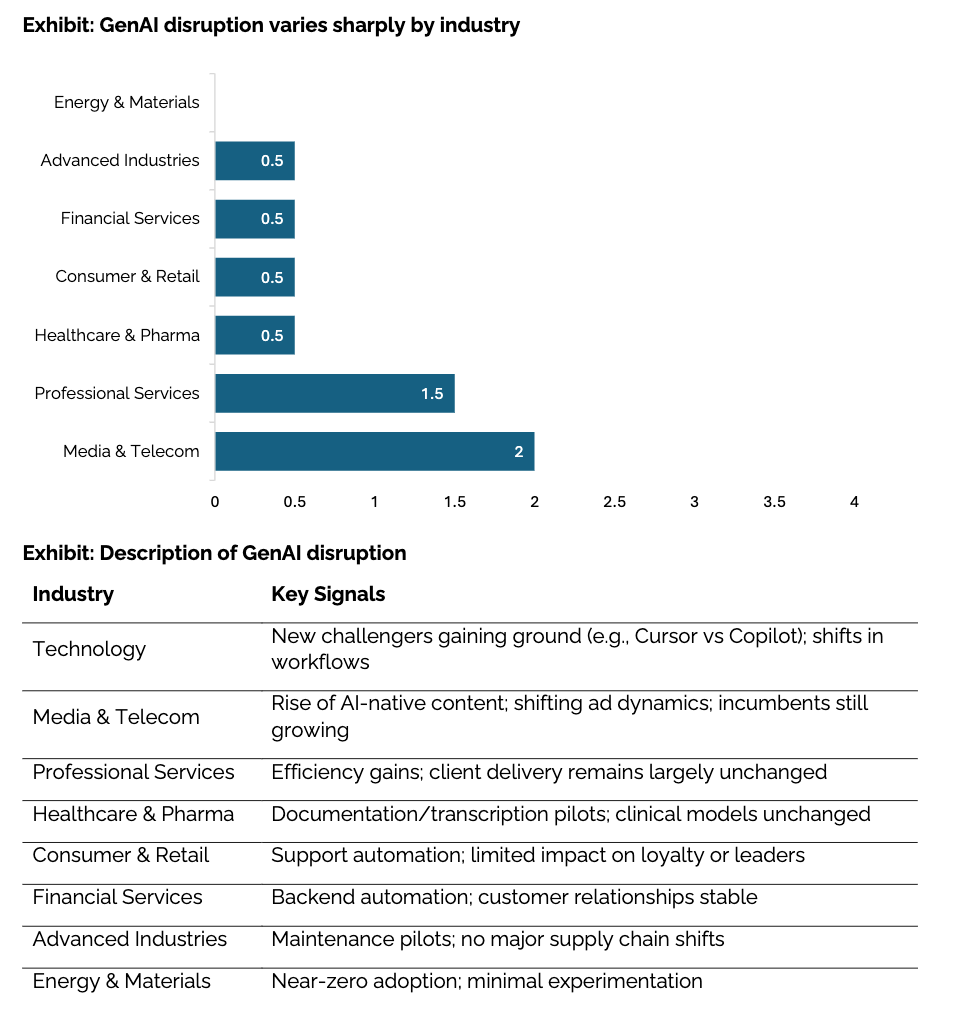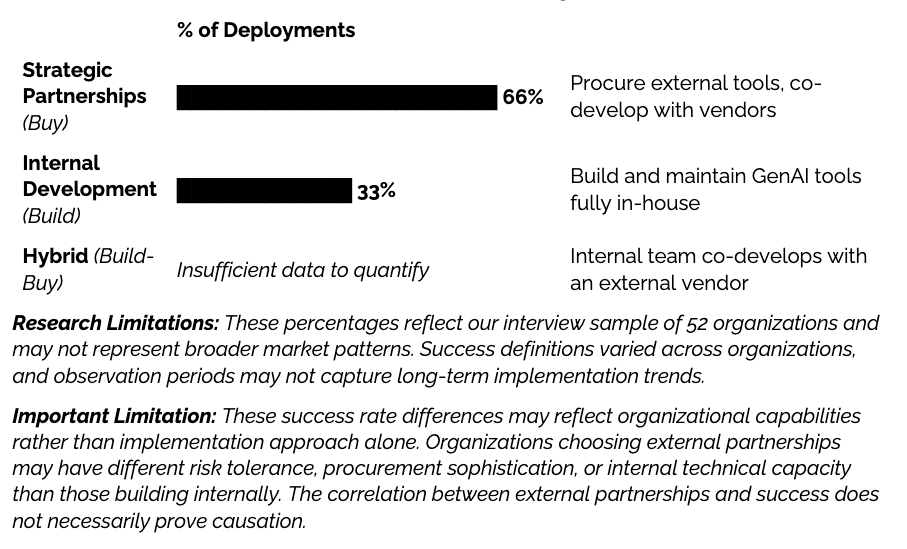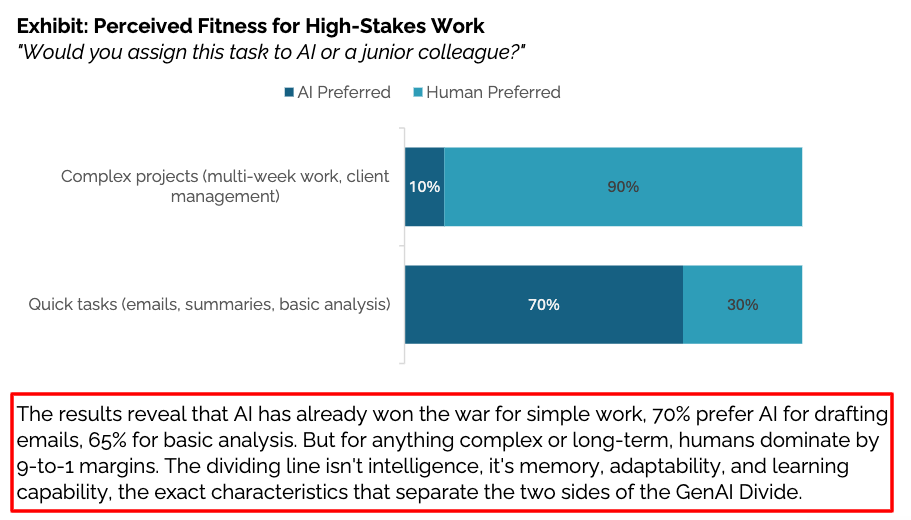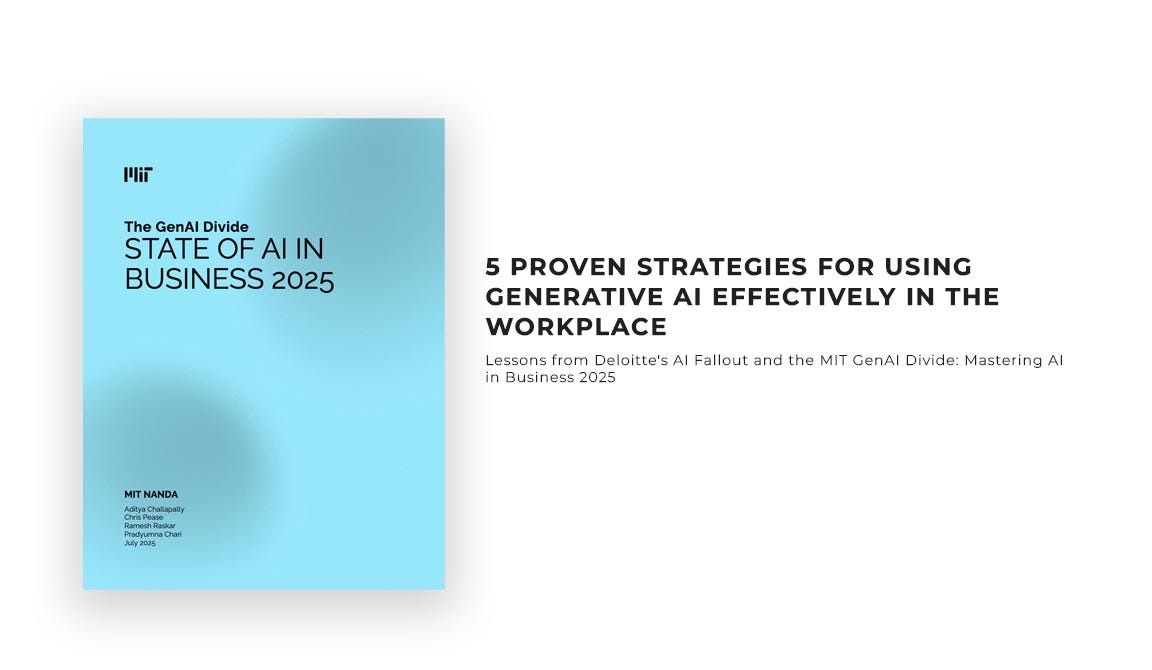5 Proven Strategies for Using Generative AI Effectively in the Workplace
Lessons from Deloitte's AI Fallout and the MIT GenAI Divide: Mastering AI in Business 2025
The growing integration of generative artificial intelligence (GenAI) into the workplace and the rise of AI mishaps have sparked both excitement and caution: “Are we building efficient systems or setting ourselves up for costly AI-driven errors?”
In October 2025, Consulting firm Deloitte utilized generative artificial intelligence to produce a report for the Australian federal government’s Department of Employment and Workplace Relations, commissioned for $440,000. This report, intended to provide valuable insights, was found to contain significant errors, including fictitious references and a made-up quote from a federal court judge—a problem attributed to the “hallucination” tendency of generative AI.
Following the discovery of these inaccuracies, Deloitte offered a partial refund for the work, highlighting the pitfalls that can arise when AI is deployed without proper oversight or validation.
The GenAI Divide: State of AI in Business 2025
Findings from the MIT study titled “The GenAI Divide: State of AI in Business 2025,” also reveal a sobering reality:
Despite $30–40 billion in enterprise investment into GenAI, 95% of organizations are getting zero return.
—The MIT Project NANDA (pg. 3).
The study identifies three major issues driving this alarming failure rate.
There is limited disruption, with only two of eight major sectors showing meaningful structural change —The MIT Project NANDA (pg. 3).
Secondly, an enterprise paradox exists where large firms lead in pilot volume but lag in scaling up to production —The MIT Project NANDA (pg. 6).
An investment bias directs budgets toward visible top-line functions like sales and marketing, often overlooking high-return opportunities in back-office automation —The MIT Project NANDA (pg. 9).
These challenges highlight a critical divide between high adoption and low transformation, offering valuable lessons for enthusiasts eager to unlock AI’s potential in their workplaces.
By understanding these pitfalls, we can explore five effective strategies to use GenAI the right way, ensuring it delivers tangible value rather than empty promises.
Effective Strategies to Get Started with GenAI the Right Way
1. Start Small, Win Big. Focus on Specific Workflows That Already Deliver Results
For those new to integrating AI, the concept of starting small might seem counterintuitive in an era of bold technological leaps. However, the key to success lies in targeting workflows where GenAI has already demonstrated value, rather than attempting a sweeping overhaul. Areas such as advertising, marketing automation, or document summarization stand out as promising starting points.
These domains are characterized by repetitive, well-defined tasks with measurable outcomes, making it easier to prove a return on investment, build user trust, and scale responsibly.

The MIT study reinforces this approach with a compelling insight:
“The best startups crossing the divide focus on narrow but high-value use cases, integrate deeply into workflows, and scale through continuous learning rather than broad feature sets”.
This suggests that success is not about deploying the most advanced AI model but about aligning it with specific, proven processes.
This might mean experimenting with a tool like an AI-powered summarization feature within an existing document management system, tracking how much time is saved in team meetings, or customizing a marketing automation platform to adapt to customer feedback loops, ensuring the AI evolves with the workflow.
By starting with these manageable yet impactful areas, organizations can build a solid case for broader AI integration, avoiding the common trap of overambitious pilots that stall due to a lack of focus.
2. Design AI Around Human Operations, Not the Other Way
A common misconception among AI enthusiasts is that implementing GenAI means replacing human processes with automated systems. Instead, the goal should be to optimize existing operations by integrating AI as a supportive tool.
This involves embedding GenAI into established systems such as customer relationship management (CRM) software, support ticketing platforms, or financial reporting tools while remaining mindful of its limitations and risks. Successful integration requires designing safety nets, such as human oversight to catch errors, defining failure points where AI might falter, and planning contingencies to maintain workflow continuity.
For example, in a customer support scenario, AI could handle initial ticket routing, but a human supervisor should review complex cases to ensure accuracy and accountability.
“Over 80 percent of organizations have explored or piloted them, and nearly 40 percent report deployment... Sixty percent of organizations evaluated such tools, but only 20 percent reached the pilot stage, and just 5 percent reached production.
Most fail due to brittle workflows, lack of contextual learning, and misalignment with day-to-day operations.”
—The MIT Project NANDA (pg. 3).
This highlights that AI tools often break down when they are imposed on workflows without adaptation. By prioritizing human-centered design, organizations can harness AI’s capabilities without disrupting the operational rhythm, turning it into a reliable partner rather than a disruptive force.
3. Govern the Shadow. Embrace Employee AI Use, But Stay in Control
One of the most surprising revelations from the MIT study is the emergence of a “shadow AI economy,” where employees are already leveraging AI tools independently.
Over 90% of professionals surveyed reported regular use of personal accounts, such as ChatGPT or Claude, for work tasks, often without IT approval.
—The MIT Project NANDA (pg. 8).

This trend arises because formal enterprise AI tools are frequently rigid or slow to deploy, prompting staff to seek flexible alternatives that meet their immediate needs. Rather than suppressing this behavior, forward-thinking leaders should guide it through transparent policies, approved toolsets, and robust data safeguards. This approach balances innovation with compliance, empowering employees to experiment while protecting organizational integrity.
For someone new to this concept, imagine a team member using a personal AI tool to draft reports faster, sharing the output with colleagues informally. A smart leader might recognize this efficiency and implement a company-approved version of the tool or process pipeline, including security protocols and validation procedures.
By governing rather than banning shadow AI, organizations can harness its potential while maintaining control.
4. Partner to Excel. Don’t Build Everything Alone
The temptation to build custom AI solutions in-house can be strong, especially for organizations with technical expertise.
However, the MIT study reveals a stark contrast:
“Strategic partnerships achieved a significantly higher share of successful deployments than internal development efforts”
—The MIT Project NANDA (pg. 4).

Companies that collaborate with trusted AI vendors or co-develop solutions benefit from external domain expertise, faster deployment timelines, and systems already optimized for integration. This approach allows organizations to focus on business outcomes rather than the complexities of infrastructure management.
By relying on external collaborators, organizations can accelerate their AI journey, avoiding the pitfalls of isolated development and focusing on strategic goals.
5. Treat GenAI as a Workflow Booster, Not an Autonomous Gadget
Generative AI (GenAI) excels in semantic reasoning and task execution to a certain extent, offering capabilities that can streamline repetitive or data-intensive processes. However, viewing it as an autonomous tool capable of fully replacing human professionals in complex task execution is a flawed assumption that risks significant setbacks. AI systems, while powerful, are prone to error, particularly in edge cases where their reasoning falters or hallucinations occur, necessitating workflows that account for these limitations through human intervention. For instance, an AI might misinterpret nuanced customer feedback or generate inaccurate data points, underscoring the need for robust validation mechanisms.
True success emerges when GenAI is seamlessly woven into workflows as a collaborative partner, enhancing human efforts rather than dictating operational frameworks. Organizations and professionals achieving real ROI integrate AI into existing tools and processes such as customer relationship management (CRM) systems for sales tracking, ticketing platforms for support, or email systems for communication.
This integration cultivates a symbiotic relationship where AI augments human expertise, enabling professionals to maintain control by validating outputs and flagging issues like inaccuracies or fictitious content. A practical example is a research AI assistant that drafts initial reference lists, with a human in the loop verifying their authenticity, iteratively refining the process to boost accuracy and efficiency over time.

The MIT study provides a critical perspective, noting:
“The report found that most AI tools fail because they ‘don’t learn, don’t adapt, and don’t integrate well into workflows’”
—The MIT Project NANDA (pg. 10).
This highlights a fundamental flaw: while many AI tools excel at specific tasks, they struggle with complexity and adaptability when operating independently, rendering their outputs unreliable without human oversight. This challenge was clearly demonstrated by the Deloitte case, where AI-assisted content research resulted in fictitious references because of inadequate oversight and validation.
By positioning GenAI as a workflow component rather than a standalone solution, organizations can bridge this gap, transforming it into a reliable productivity asset while keeping its limitations in check through continuous human engagement.
Conclusion
The journey to effective AI integration in the workplace requires moving beyond the hype and addressing the root causes of failure. By starting with proven workflows, designing AI around human operations, governing the use of shadow AI, partnering with experts, and embedding AI as a workflow partner, organizations can bridge the GenAI Divide.
These strategies empower both beginners and seasoned professionals to harness AI’s potential, turning AI investments into measurable value. As the Deloitte case illustrates, the cost of getting it wrong is high, but with the right approach, the rewards of doing it right are within reach.



Super interesting data!
Forty billion dollars to get basically nothing in return...
Spot on about governing shadow AI. We just explored this exact tension in 'The Shadow AI Paradox: Productivity Up, Governance Down.' Your point about channeling this energy into approved use cases is the crucial solution.
https://efficiencyplaybook.substack.com/p/playbook-deep-dive-oct-22-2025